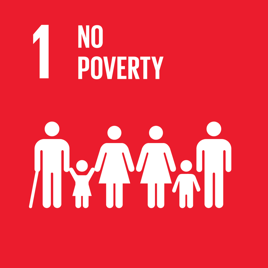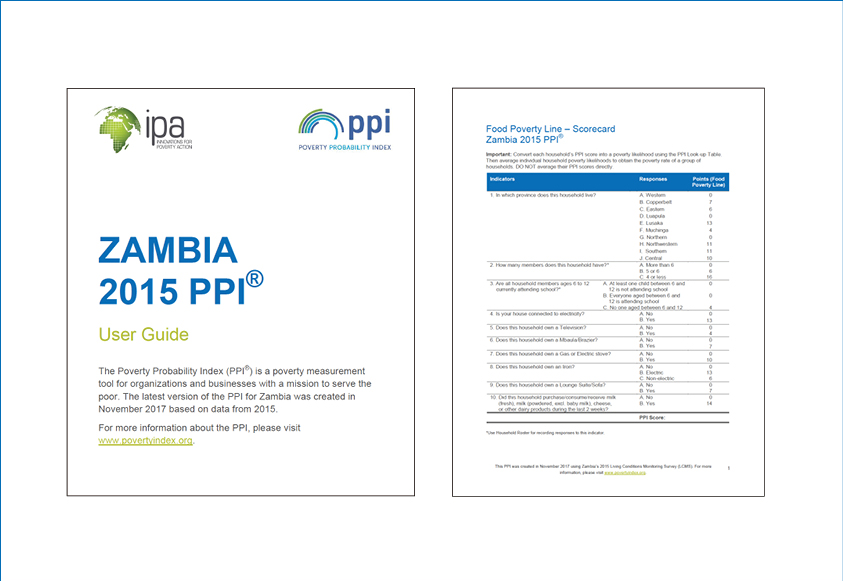Hi all, I’m Julie Peachey, Director of Poverty Measurement at Innovations for Poverty Action where I oversee a widely-used tool called the Poverty Probability Index (PPI). It’s no surprise to me that the first Sustainable Development Goal is “End Poverty in all its forms everywhere’’ as so much of our international development work is designed with this objective in mind. But how does an organization – social enterprise, NGO, corporation, impact investor – understand and report its contribution to this goal?
The first two indicators (1.1.1 and 1.1.2) for measuring progress against targets for SDG1 are the proportion of the population living below the international extreme poverty line (currently $1.90/ per person per day in 2011 PPP dollars) and the national poverty line. So, an organization providing affordable access to goods, services and livelihood opportunities for this population or including them in their value chain as producers and entrepreneurs can simply report the percentage of its customers or beneficiaries that are below these two poverty lines. But wait….simply….you say? Getting household-level information on poverty / consumption / income / wealth is notoriously hard in developing countries.
Hot Tip:
Use the PPI. It is a statistically rigorous yet inexpensive and easy-to-administer poverty measurement tool. The PPI is country specific, derived from national surveys, and uses ten questions and an intuitive scoring system. The PPI measures the likelihood that the respondent’s household is living below the poverty line, and is calibrated to both national and international poverty lines. There are PPIs for 60 countries and it is available for free download at www.povertyindex.org.
The PPI provides a measure of poverty that is both objective and standard – not particular to an area or country or sector. This means that organizations and investors can compare the inclusiveness of their projects and programs within and across countries, and across sectors.
The PPI can be useful in reporting against other SDGs as well, especially those that are focused on inclusive access to services and markets, as well as those that aim to reduce inequality and engender inclusive growth. Understanding whether initiatives are reaching the poorest and most vulnerable is integral to our collective progress against these targets.
Rad Resources:
- Impact Management Project’s SDG Infographic and how PPI maps to the 5 dimensions of impact
- GRI’s Guide to Business Reporting on the SDGs
- Getting Started with the PPI
The American Evaluation Association is celebrating International and Cross-Cultural (ICCE) TIG Week with our colleagues in the International and Cross-Cultural Topical Interest Group. The contributions all this week to aea365 come from our ICCE TIG members. Do you have questions, concerns, kudos, or content to extend this aea365 contribution? Please add them in the comments section for this post on the aea365 webpage so that we may enrich our community of practice. Would you like to submit an aea365 Tip? Please send a note of interest to aea365@eval.org. aea365 is sponsored by the American Evaluation Association and provides a Tip-a-Day by and for evaluators.

